To a climate conversation long dominated by computer models and technological jargon, Regenerating Life: How to Cool the Planet, Feed the World and Live Happily Ever After brings some badly needed rain, along with dung beetles, sweating trees, fungal mycelia, cloud-making forests, beavers, worms, soil microbes, cow patties and whales. As more and more people are learning, there’s another side to the climate that’s been overlooked, one having less to do with what we put in the air than what we do to the land and this film brings it beautifully to life.
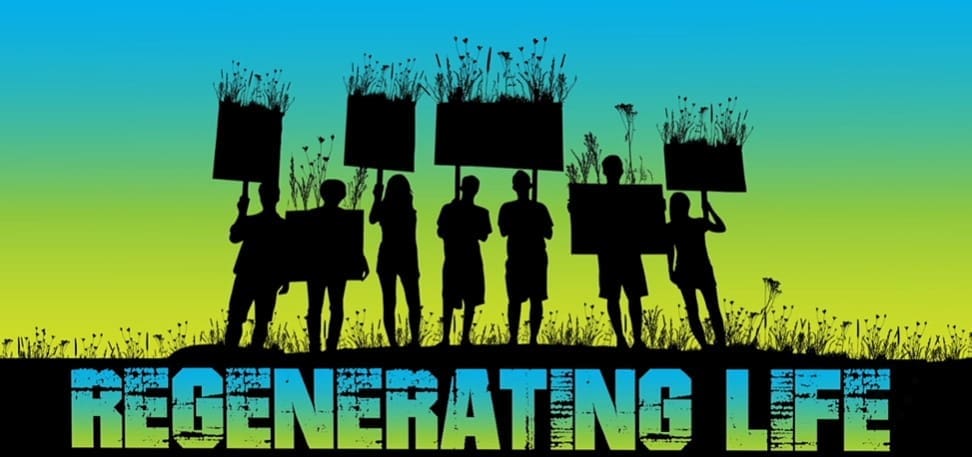
It’s a daunting task, for once we open our eyes to the biological side of climate, we confront an almost incomprehensible complexity. There’s photosynthesis to understand as well as plant transpiration, the small water cycle and the greenhouse effect. Soil microbiology, cloud formation, ecosystem dynamics and nutrient cycles all figure in. There is the physics of light and heat and the twin chemistries of carbohydrates and hydrocarbons to account for, not to mention the legacies of colonization, slavery and the industrialization of agriculture. A lesser filmmaker would leave us lost in facts and figures and timelines, but John Feldman, writer, photographer and editor of the film, delivers a journey so visually sumptuous, so evenly paced and cleverly edited, we hardly realize we are being taught at all.
The film starts quietly, with the sound of rain, then opens to a downpour in a woodland. As the camera follows a creek down a mossy ravine Feldman begins, “When I started this film about the causes and solutions to the climate crisis, I had no idea I would be spending so much time looking at water.” And so it is with anyone who learns about the living basis of climate. It’s so much about water. And water is so much about life. Together, and in exquisite synchronization, through myriad cycles and feedbacks, they produce what we call the climate (of which CO2 emissions are a critical part.) But there is no simple linear explanation for how it all works. It’s too complex for that, with many things happening at once, cycling one through the other. As he discovers early on, “everything leads to everything else.”
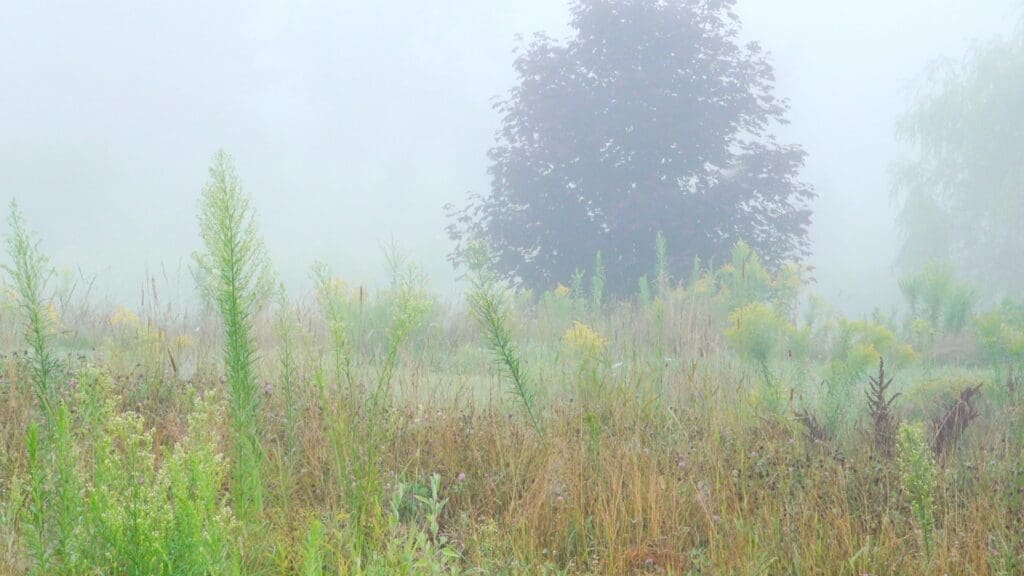
To deal with this lack of linearity, Feldman divides his film into three parts, looking at the whole through three lenses, so to speak. Part 1, called Water Cools the Planet, looks through the water lens. Part II, Life Sustains the Climate, asks “How does life sustain itself?” and looks through the lens of life for the answer. Part III, Small Farms Feed the World, takes on the industrialization of agriculture while providing common sense climate solutions through the lens of food.
I use the word “lens” deliberately. Feldman shows his story as much as tells it. An example comes at the end of part I. He’s just led us through the intricate ferment of living processes that run the water cycles that cool our climates. We’ve seen how living soil not only sequesters carbon but also water, banking moisture against drought while hydrating green growth above, and how vegetation sweats much like we do, with forests cooling their environments much as a sweaty shirt in the wind cools us. We’ve examined the subtle, but oh-so-powerful physics of how heat moves through the phases of water, liquid to vapor and back again. There’s been a lot of information to take in, and then as reward he lets our eyes feast a while on a time-lapse unfolding of morning mist over a glen. Vapors rise, twist, curl and fall like dancing veils as we move beyond the science into the thing itself, the animate beauty and mystery of it.
Part II widens the lens yet further. To understand climate you must understand water and to understand water you must understand life, thus the question: “How does life sustain itself?” I love that he asks this question. It’s the very opposite of the scientific reductionism that characterizes the standard climate narrative, with Earth’s climate reduced to something of a machine with a carbon dial.
A particularly mesmerizing passage occurs when Feldman takes us behind a microscope to look at the creatures we’ve so far been referring to as “soil microbia.” Looking down on the slow, translucent bodies moving about at their tasks, with the film’s subtly melodic musical accompaniment tugging at my borders, I felt a sympathy and connection with these beings that I hadn’t expected. The passage affects me still. This morning I was looking at the edge of an incoming tide and saw what I first thought was a pale fragment of dead seaweed. But noticing it was translucent like the microbes I had seen in the film I looked longer and realized it was moving on its own. Then I saw the dark eyespots, and fin-like appendages waving from its sides. Would I have noticed this embryonic creature-in-making had I not seen this movie? Hard to say, but life is so at the center of this film that it seems to have affected how I look at things even days afterward. With this intensified attentiveness to life, my surroundings seem to have, well, come alive.
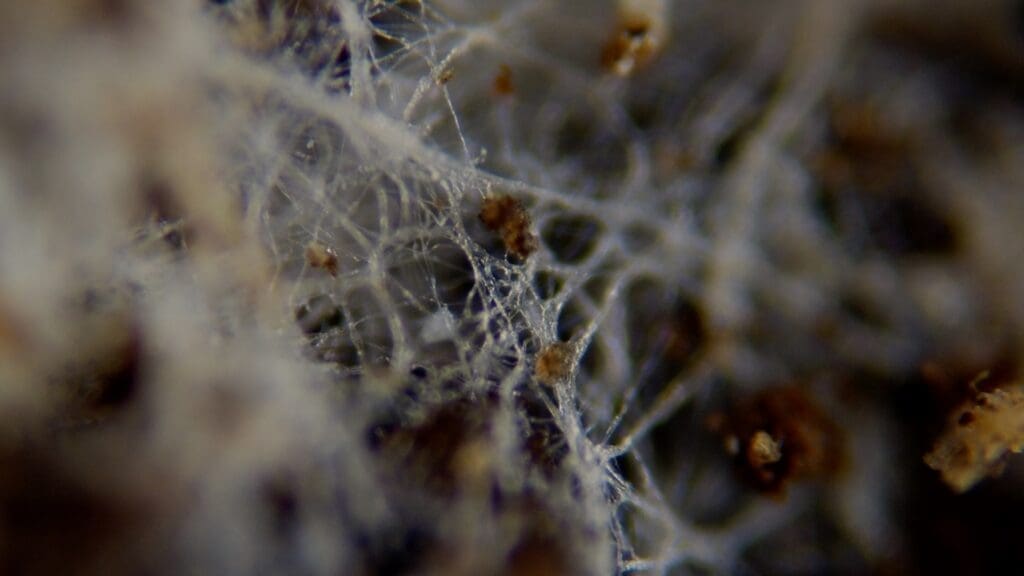
In Part III the film takes on more of an edge. To talk about food is to talk about the industrial takeover of agriculture. It’s also to talk about slavery and its legacy, as well colonialism and its long trail of brutal land-taking. Feldman doesn’t shy from any of it, detailing just how the growing of food has become so poisonous, industrial and corporatized. The “green” revolution turns out to be not so green after all, kind of like “green” energy: imposing an industrial solution on what is an organic problem.
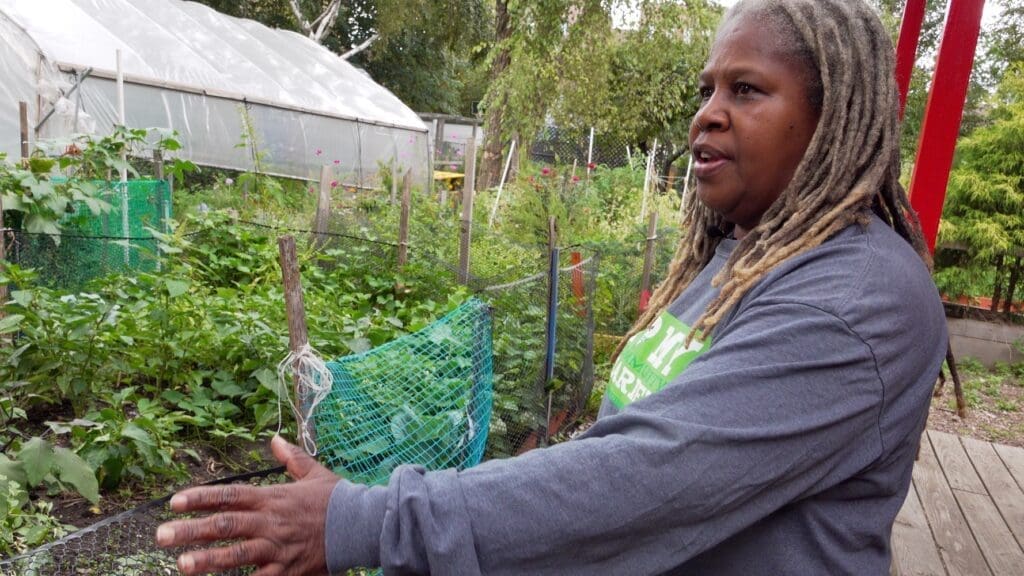
I’ve mentioned how Feldman shows as well as explains his material. He also lets others do the telling. There’s long been a quiet community around the world of people who, coming to understand the power and beauty of this new, more ecological way of seeing the climate, have pretty much dedicated their lives to it. We meet many of these figures and what’s so refreshing is that none of them are big names. There are no Hollywood figures, just everyday people who, in their own way, have come to see how all the pieces fit together. Along with soil scientists, microbiologists and organizers, we meet an ecologist who homeschools eighth graders in science, a nutritionist turned soil communicator, two African American sisters reclaiming their afro-indigenous heritage, farmers in India applying regenerative agriculture at province-wide scale, growing food even during drought, and a community gardener in the middle of New York City who is regenerating life from the city-center out and has become very clear that “to grow your own food gives you power.”
There’s a good chance some people won’t like this film. They won’t appreciate it referring to carbon gases and the greenhouse effect as a cause of climate change, rather than the cause of climate change. Some may even try to portray it as a kind of climate denial. But this film isn’t about denying anything. It’s a film of affirmation. And what it affirms, over and over, is life, not only the wonder of it but the power of it to heal our broken climate. It’s more of an orchestration than a machine. But even that is too tightly structured a comparison. There is something wild and beautiful at its heart. It’s a force with its own will. And if you allow yourself, it will fill you with awe and even hope.
Feldman is surely awed. You may well be too. It’s something you can only see through discovery, and now you have this calm and generous film to help you with that. You might want to have pen and paper on hand, and maybe invite a friend or two to join you.
There’s a lot to talk about.
Rob Lewis
Pictures are stills from the film Regenerating Life, used with permission.
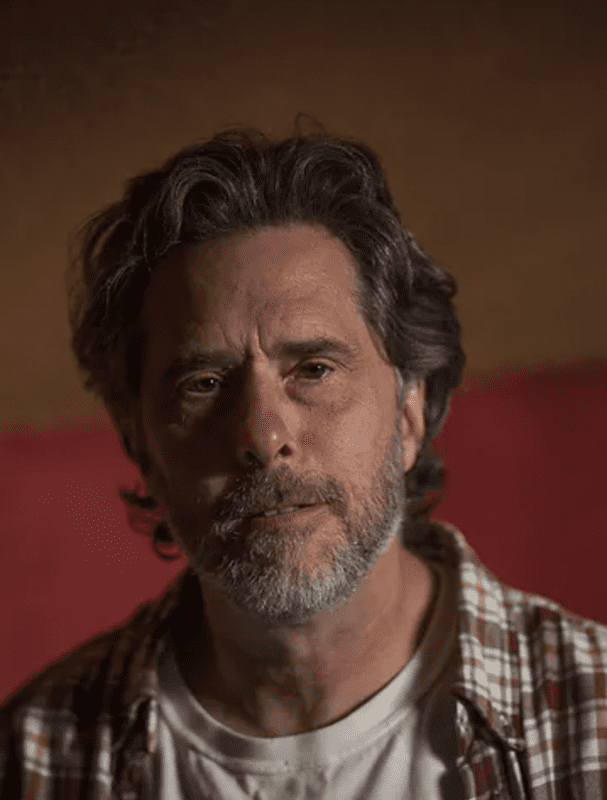
Rob Lewis is a poet, writer and activist working to give voice to the more-than-human world, and a member of Bio4Climate’s Leadership Team since 2021. His writings have appeared in Resilience, Dark Mountain, Atlanta Review, Counterflow and others, as well as the anthologies Singing the Salmon Home and For the Love of Orcas. He’s also author of the poetry/essay collection The Silence of Vanishing Things. Lately, he’s been writing about how the climate isn’t a machine with an engineering fix, but a living system that only can only be healed through restraint and restoration, at https://theclimateaccordingtolife.substack.com/

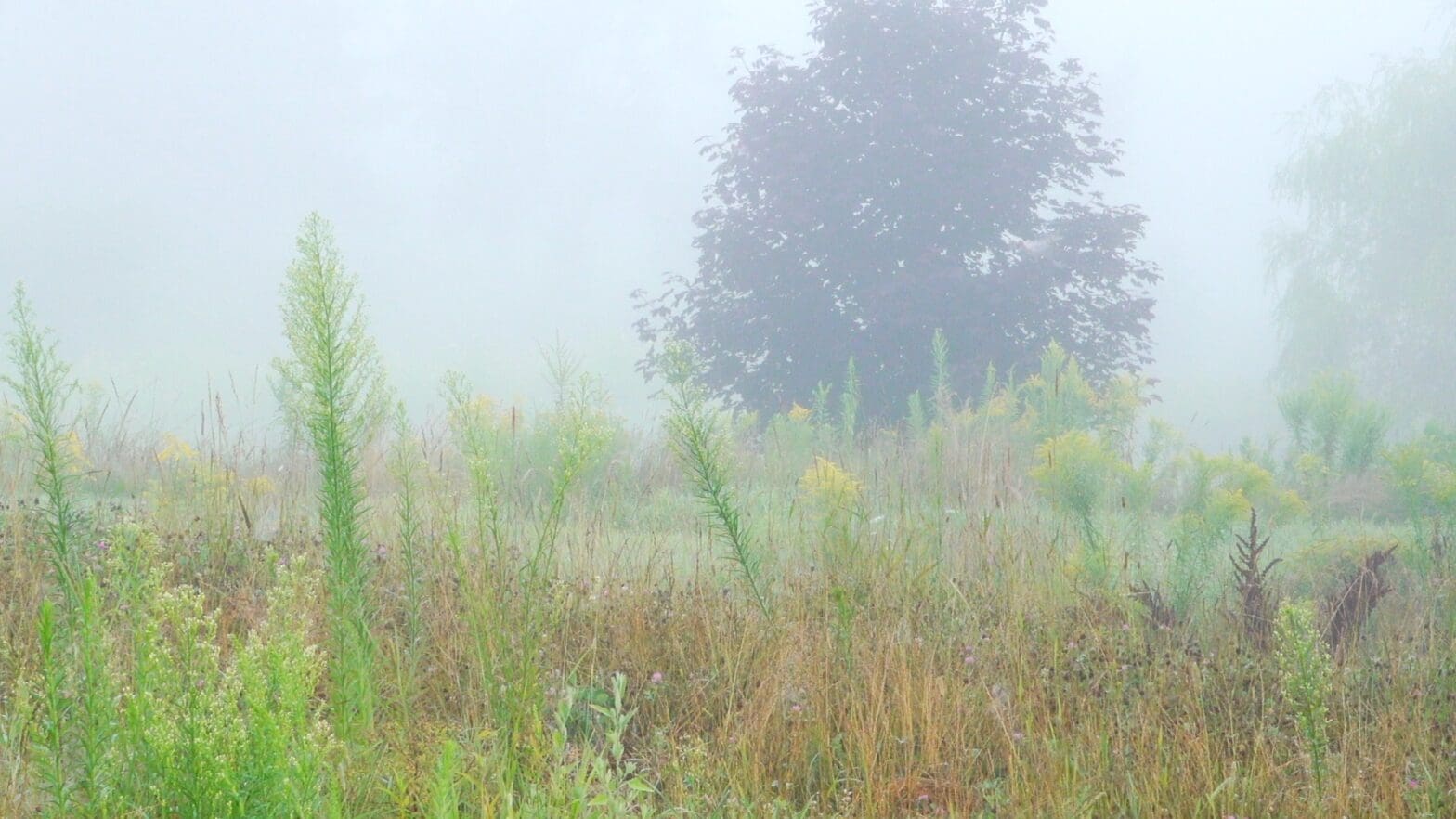
I am organizing a number of semi-public showings (mostly house parties) of Regenerating Life in the Washington, DC metro area. If you are interested to attend one of those, or are willing to host your own showing, please be in touch. philip.bogdonoff@bio4climate.org
I bought a ticket, only to discover this is an in-person event. Any chance it will be recorded and I ‘ll be able to get a copy? I’m an activist with MN350 and keenly interested in Regenerative Agriculture.
Thanks!
Regenerating Life is available now through Bullfrog Films.
https://hummingbirdfilms.com/regeneratinglife/watch-the-film/
Dear Stan,
Thank you so much for your interest.
For screening options:
Host in-person screening at your local movie theater, church, school or community center
Host virtual screening on Zoom or Google Meet. At Bio4Climate, we showed the movie’s three 45-minute parts over 3 consecutive meetings
Host local institution / college / university screenings
Please visit http://www.bullfrogfilms.com/catalog/regl.html for more information.
Thanks, again.
I am also interested in how to get my mitts on this film. Help?
Regenerating Life is available now through Bullfrog Films.
https://hummingbirdfilms.com/regeneratinglife/watch-the-film/
Dear Peter,
Thank you so much for your interest.
For screening options:
Host in-person screening at your local movie theater, church, school or community center
Host virtual screening on Zoom or Google Meet. At Bio4Climate, we showed the movie’s three 45-minute parts over 3 consecutive meetings
Host local institution / college / university screenings
Please visit http://www.bullfrogfilms.com/catalog/regl.html for more information.
Thanks, again.
This looks like an amazing, inspiring film that I’d really like to see, but can’t because it’s only being shown in-person at Tufts University and I live in northern Vermont and live with someone who is particularly vulnerable to the ongoing COVID pandemic. Will this movie be made more widely available? Can it be used to inspire engagement by other organizations working to regenerate life and reverse climate change in other states and countries? Will it ever become available online? Thank you for bringing this film into being. I hope to be able to see it someday soon!
I too would like to find out about making this film available to a wider public for purchase of for rent! It is much too important to be shown only once at one location! It is beautiful and true and WE NEED IT to be shared as widely as can be arranged.
Regenerating Life is available now through Bullfrog Films.
https://hummingbirdfilms.com/regeneratinglife/watch-the-film/
Dear Mary,
Thank you so much for your interest.
For screening options:
Host in-person screening at your local movie theater, church, school or community center
Host virtual screening on Zoom or Google Meet. At Bio4Climate, we showed the movie’s three 45-minute parts over 3 consecutive meetings
Host local institution / college / university screenings
Please visit http://www.bullfrogfilms.com/catalog/regl.html for more information.
Thanks, again.
Dear Jane,
Thank you so much for your interest.
For screening options:
Host in-person screening at your local movie theater, church, school or community center
Host virtual screening on Zoom or Google Meet. At Bio4Climate, we showed the movie’s three 45-minute parts over 3 consecutive meetings
Host local institution / college / university screenings
Please visit http://www.bullfrogfilms.com/catalog/regl.html for more information.
Thanks, again.